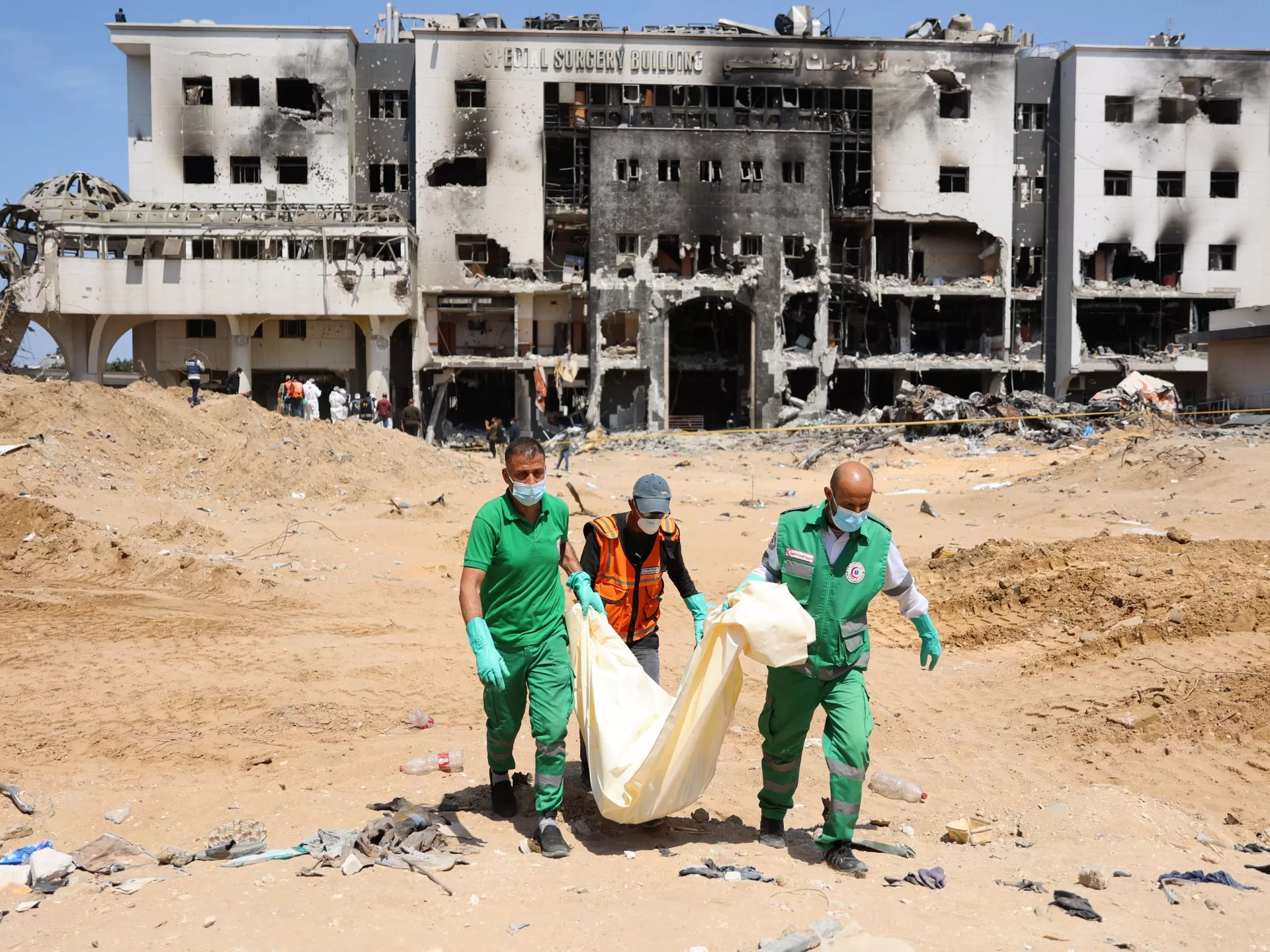Last month, the Israeli military finally withdrew from Gaza’s al-Shifa Hospital after a two-week raid, leaving behind nothing but apocalyptic scenes of death and destruction.
Grounds were littered with dead bodies. Most buildings were burned and reduced to empty shells.
What Gaza lost in al-Shifa was much more than its largest medical complex. Because Al-Shifa stood as much more than a hospital for the people of Gaza.
For members of the healthcare community, al-Shifa was home – it was where we trained, conducted research and learned. It was where we found the inspiration to become the best healers we could possibly be.
For our patients, it was a centre of hope. They knew that they would receive the best care at al-Shifa, which was far better equipped than most other hospitals in the strip.
Furthermore, al-Shifa was a popular gathering place and a national landmark. Before the genocide, it was surrounded by restaurants, libraries and two universities, all within walking distance. It was truly the beating heart of Gaza City.
Israel reduced it to burned rubble, and the site of a massacre.
Al-Shifa offered a number of unique services that people could not get anywhere else in Gaza. It had the most brilliant doctors and advanced medical instruments such as dialysis machines for kidney patients and radiological equipment. Its expert medical teams could carry out rare surgical procedures. For many decades, it stood strong among sieges, shortages of materials, and many Israeli assaults and provided life-saving care to millions of Palestinians.
Al-Shifa was a hub of knowledge for medical professionals from outside Gaza. All medical teams visiting Gaza would make sure to visit al-Shifa to witness unique operations, learn about the latest developments in medicine and follow many studies being conducted there.
And, for us, doctors, medics and healthcare workers of Gaza, al-Shifa was a symbol of medical excellence and a source of inspiration as it was where Gaza’s best and brightest medical professionals worked and served the community.
Al-Shifa was a symbol of our hopes for the future, but also a big part of our past. Many of us had been treated there long before the start of our medical training. It was a gem that everyone in Gaza was immensely proud of. Its destruction was an indescribable loss.
“I could not hold back my tears upon witnessing the damage here,” Dr Marwan Abu Sada, a well-known surgical consultant, said following a visit to the medical complex after Israel’s assault.
“I did not shed tears for my own home being damaged, but for the destruction of the hospital, and for all the medical staff and the wounded people in Gaza,” he added.
I share his feelings of loss and devastation and I know many other healthcare workers do too.
Israel had long threatened al-Shifa, but so many of us didn’t believe, didn’t imagine destruction on the scale we eventually witnessed could happen. I cannot begin to describe the shock of seeing al-Shifa, the heart of Gaza’s healthcare system, in flames.
Israel knew that attacks on al-Shifa would violate international law and the Geneva Convention, so it lied and said there was a military “operations base” under it. After spending weeks ransacking the complex, the Israeli military failed to provide any evidence to support this claim. But it did not matter – al-Shifa was destroyed, and another aspect of this ongoing genocide was justified.
The purpose of Israel’s attack on al-Shifa was not to achieve a military advantage against its enemy, but to worsen the suffering of the Palestinian people. The attack took away from the people of Gaza their main refuge at a time when they are facing multiple threats. It displaced once again thousands of refugees taking shelter there. It left people maimed by bombs and snipers, children pulled from under the rubble, hungry infants and fragile elders without access to healthcare. The attack transformed a place of healing and safety into a site of massacres and mass graves. It made a mockery of international law and exposed Israel’s cruelty.
When Israel destroyed our homes, it was a horrific loss. But the destruction of al-Shifa was an even bigger tragedy for many of us. It was not only a personal loss, but also a collective one.
With al-Shifa gone, we are left with an incurable wound. What will we do now, what can we do, and how can we rebuild after the very heart of our society has been ripped out?
Israel destroyed all of Gaza’s universities and ensured that the majority of its hospitals were nonfunctional. It turned al-Shifa into a pile of rubble. It killed countless medics, nurses, doctors and academic clinicians. So many others had to evacuate to stay alive. Most recently, we received the tragic news of the killing of Dr Adnan al-Bursh, director of the orthopaedic department at al-Shifa, following his kidnapping and interrogation by Israeli soldiers. Those of us still in Gaza can do nothing other than sit and wait to see who will be killed next, or which vital building will be targeted. This is no life.
As we hope for Israel’s war on Gaza to come to an end, and a ceasefire agreement to be reached, we also fear what will happen next – what will life in Gaza look like after this genocide, what will it look like without al-Shifa, and can we rebuild our health sector after all the losses we experienced? We know that we cannot replace al-Shifa, at least in the short term. But we can keep alive what it represented: our hopes for a better future, and the strength and resilience of our community.
The views expressed in this article are the author’s own and do not necessarily reflect Al Jazeera’s editorial stance.
